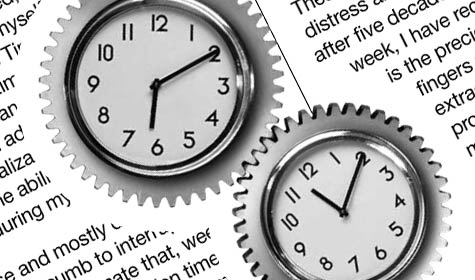How much time each day do you spend dealing with interruptions? Probably a lot more than you are willing to admit. Varying amounts of light, work and non-work related phone calls, and the constant popup of email notifications affect our thinking. And between cubicle noise, mobile phone messages, and coworkers walking by, it’s a wonder we can stay on task for eight plus hours each day.
A study done at George Mason University discovered that persistent interruptions not only decrease employee productivity, but they also lower work quality. The study involved testing two groups of subjects who were tasked with writing an essay. The first group was repeatedly interrupted while writing, but the second group was left without distractions while writing. The essays were graded by independent scholars based on a numbered scale, and the first group’s essays were found to be of lesser quality than the second group’s writings.
But having proof that diversion affects more than the quality of our work still doesn’t help us recover the time that is lost. And it seems that daily, the amount of distractions increases. So how can employers and employees work to decrease the interruptions and regain some of that lost productivity, not to mention increase the quality of the work performed?
A book, “The Time Bandit Solution: Recovering Stolen Time You Never Knew You Had,” might be able to provide the answers. It’s divided into three sections to help readers understand the stages of distractions and how to control our time:
- Time Loss Interruption Issues
- Time Loss Interruption Solutions
- Time Gained Behavioral Planning
In our IT Downloads section, you can read an excerpt from this book, which covers the interruptions we face each day, and identifies the five time-loss factors: interruptions, restarts, momentum loss, do-overs and distress manifestations. It provides a quiz to help identify minutes lost per day and helps the reader understand why it’s important to try to control such distractions.
And who couldn’t benefit from a few lessons on tightening up our productivity and taking back some of the time we lose each workday?
Kim Mays has been editing and writing about IT since 1999. She currently tackles the topics of small to midsize business technology and introducing new tools for IT. Follow Kim on Google+ or Twitter.



